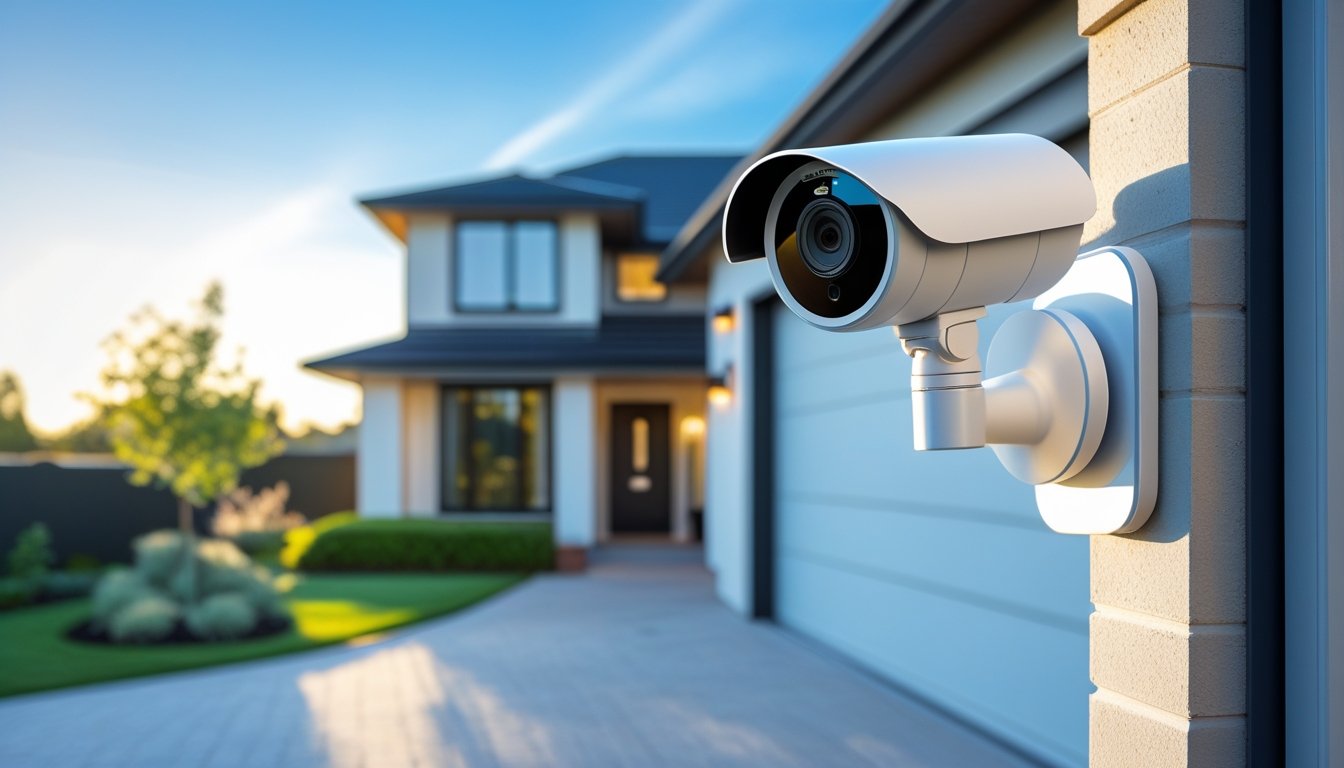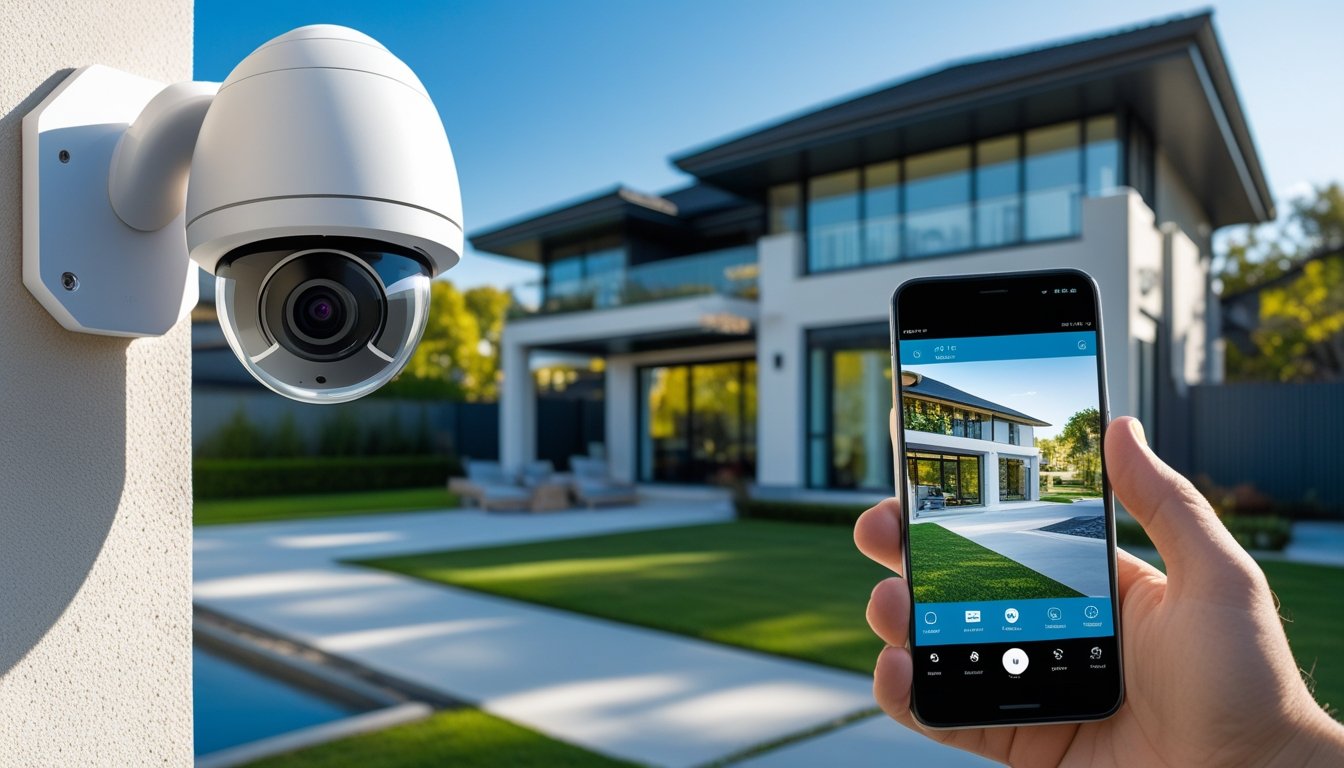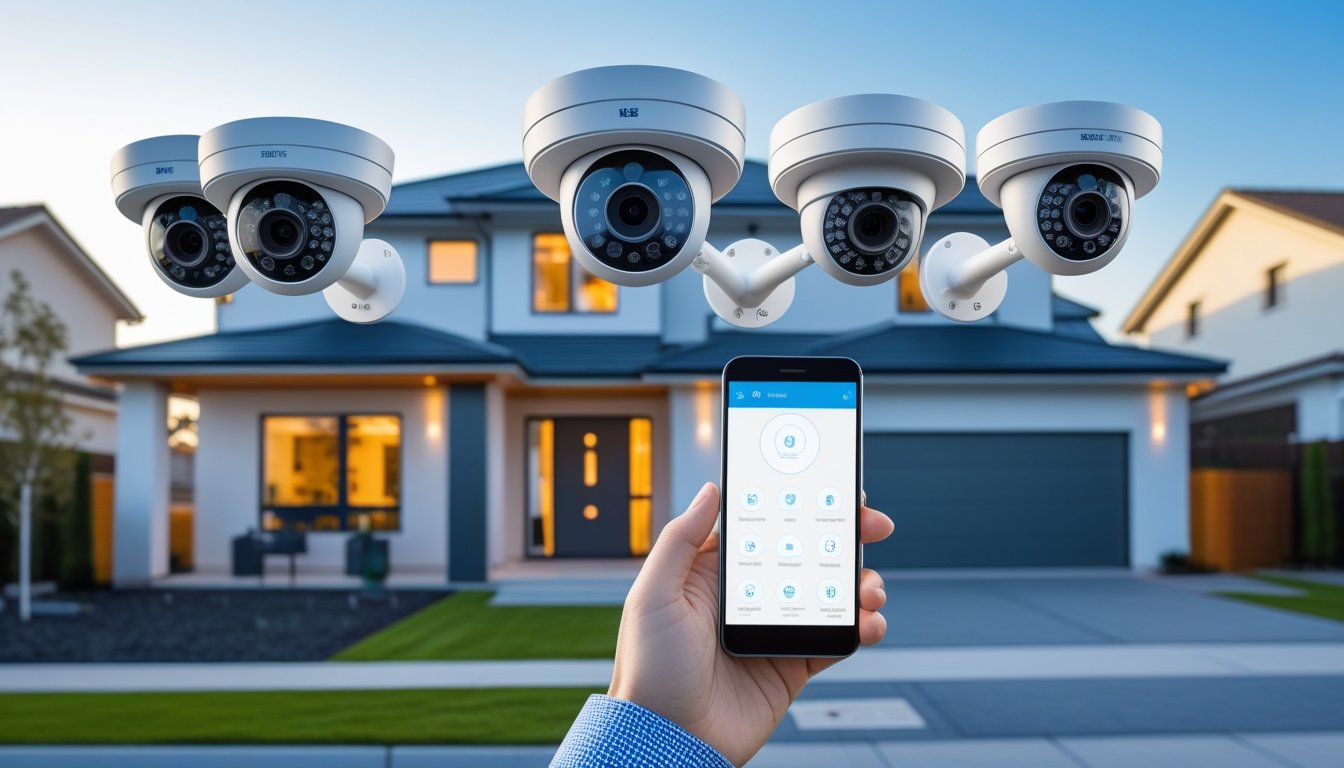Late updated: 15 Oct 2025 14:10
Written by: Elena Prescott
Enhancing Home Security With Modern CCTV Systems: A Comprehensive Guide
In today's rapidly evolving world, home security is a top concern for many of us. Modern CCTV systems have transformed the way we protect our homes, offering an array of advanced technologies that go beyond traditional surveillance. These innovative systems not only capture high-definition video footage but also intelligently assess potential threats using AI and smart analytics. By incorporating features like facial recognition, motion detection, and mobile app integration, they have become indispensable tools in safeguarding our properties.

Our exploration into the latest CCTV systems reveals a significant leap in security capabilities. With advancements in machine learning and cloud storage, today's systems provide both real-time alerts and secure footage storage. Such features ensure that we remain connected and informed, even when we're away from home.
As we delve deeper, we'll uncover practical tips on installation and optimisation to enhance security effectively. These insights aim to help us make informed decisions that align with our unique needs, ultimately ensuring peace of mind.
Key Takeaways
- Modern CCTV systems use AI and advanced technologies for enhanced security.
- Effective installation and optimisation are crucial for maximum protection.
- Comprehensive insights address common queries about home security.
Modern CCTV Systems: Key Features and Technologies

In today's rapidly evolving security landscape, modern CCTV systems are revolutionising how we protect our homes. Significant advancements have equipped these systems with features that provide enhanced safety measures and seamless integration into our smart homes.
Types of CCTV Cameras for Homes
CCTV systems come in various camera types, tailored for different home security needs. Analogue cameras offer basic functionality and straightforward installation, making them ideal for users seeking simplicity. IP cameras, however, provide higher resolution and the flexibility of remote access over the internet. This makes them a favourite among tech-savvy homeowners.
For a more comprehensive surveillance setup, we might consider using PTZ (Pan-Tilt-Zoom) cameras. These cameras cover vast areas and allow remote directional control and zooming. Bullet and dome cameras each have unique advantages, including their housing design and mounting options, which cater to both indoor and outdoor environments.
Advanced Capabilities: Facial Recognition, Artificial Intelligence, and Anomaly Detection
Modern CCTV systems leverage advanced technologies like artificial intelligence (AI) to improve security. AI allows for features such as facial recognition, which enhances identification accuracy by distinguishing among family members, guests, or potential intruders. It adapts over time, learning and differentiating between familiar and unfamiliar faces.
Anomaly detection is another breakthrough made possible by AI. This capability identifies unusual activities or changes in familiar patterns, promptly alerting us to potential security breaches. By integrating these technologies, we significantly boost our home's surveillance capabilities, making it more proactive and responsive.
Storage Solutions: Cloud and Local Options
Choosing the right storage solution for our CCTV systems is crucial. Local storage, such as hard drives or NVRs (Network Video Recorders), offers the advantage of secure offline data access. This is particularly beneficial if internet connectivity is unreliable.
Alternatively, cloud storage provides scalability and ease of access. It allows footage to be accessed remotely, ensuring data safety even if physical devices are compromised. Many modern systems incorporate both options, providing us with flexibility and a reliable backup mechanism for our video footage.
Remote Monitoring and Smart Home Integration
One of the standout features of modern CCTV systems is remote monitoring. This capability allows us to access live or recorded video feeds from anywhere using a smartphone or computer, offering peace of mind even when we're away from home.
Integration with smart home systems enhances this feature further. Connecting our CCTV to platforms like the Internet of Things (IoT) enables automated actions, such as turning on lights or alerting us to movement detected in predefined zones. This synergy not only fortifies our home security but also contributes to building a cohesive and responsive smart home environment.
Installing and Optimising CCTV for Enhanced Home Security
By paying careful attention to the details of installation and maintenance, we can maximise the effectiveness and security benefits of our CCTV systems. From deciding where to place cameras precisely to incorporating them with existing security frameworks, each step is essential.
Optimal Camera Placement and Coverage
Determining the best locations for our CCTV cameras boosts coverage and effectiveness. Strategically placing cameras at entry points like doors, windows, and driveways is critical. It is crucial to cover all possible blind spots and focus on specific points of interest.
High-traffic areas should be prioritised. Additionally, placing cameras at the correct height and angle ensures optimal visibility. Proper placement deters potential intruders by providing clear and comprehensive surveillance.
Integration with Alarm Systems and Access Control
CCTV systems function best when integrated with existing security elements. By combining CCTV with alarm systems, we create an interconnected security network. This integration can trigger alarms based on live surveillance data, enhancing responsiveness.
Incorporating access control measures such as biometric authentication strengthens security. This collaboration allows us to monitor and manage entries and exits in real-time. Having a holistic approach makes it more challenging for unauthorised individuals to gain access.
Ongoing Maintenance and Software Updates
Regular maintenance is essential to ensure our CCTV systems function optimally. Cleaning the camera lenses and checking connections keep them working efficiently. Performing routine inspections helps identify potential issues before they become problematic.
Keeping software updated is paramount. Updates improve system performance, provide new features, and reinforce security protocols. By staying current with updates, we safeguard our systems against emerging threats and vulnerabilities.
Addressing Privacy Concerns and Data Protection
Privacy is a significant concern when employing CCTV systems. We must be transparent about camera locations and purposes. Informing family members and visitors about surveillance can help alleviate concerns.
Data protection is equally important. Implementing strong passwords, encryption, and access controls protects captured footage. This approach ensures compliance with regulations and protects individuals' privacy while maintaining the integrity of our security systems.
Frequently Asked Questions

In modern home security systems, advancements in CCTV technology offer improved features like integration with AI and smart home devices, enhancing both security capabilities and user experience. Cost and data privacy considerations also play a critical role in choosing the right system.
What are the latest advancements in CCTV technology for home security?
Contemporary CCTV systems have been enhanced with artificial intelligence, enabling functions like facial recognition and intelligent motion detection. Smart capabilities allow seamless integration with home automation systems, offering remote monitoring and control through mobile devices.
How can homeowners integrate CCTV systems with smart home technology?
Integrating CCTV systems with smart home technology involves using compatible devices that can communicate via centralised hubs. This enables homeowners to control and monitor security cameras through an app, set automated responses, and receive notifications.
What are the considerations for ensuring data privacy when installing a home CCTV system?
Data privacy should be a foremost concern when deploying CCTV at home. It's crucial to secure video feeds with encryption and access control, regularly update software, and choose reputable systems that comply with privacy regulations.
What is the most cost-effective way to install a comprehensive CCTV system for home security?
Opting for do-it-yourself installations can reduce costs, but professional installation might ensure optimal coverage and system performance. Choosing packages that offer scalable solutions allows homeowners to expand their systems as needed without substantial upfront investments.
How does artificial intelligence enhance the capabilities of modern home CCTV systems?
Artificial intelligence enhances CCTV systems by providing advanced features like object recognition, automated alerts, and behaviour analysis. AI-driven analytics can distinguish between innocuous and suspicious activities, reducing false alarms and improving response times.
What should homeowners look for in terms of image quality and resolution when selecting CCTV cameras?
High-definition cameras, preferably with 1080p resolution or above, are recommended for clear images and effective surveillance. Consider features like night vision, wide dynamic range, and weather resistance to ensure comprehensive coverage under various conditions.
